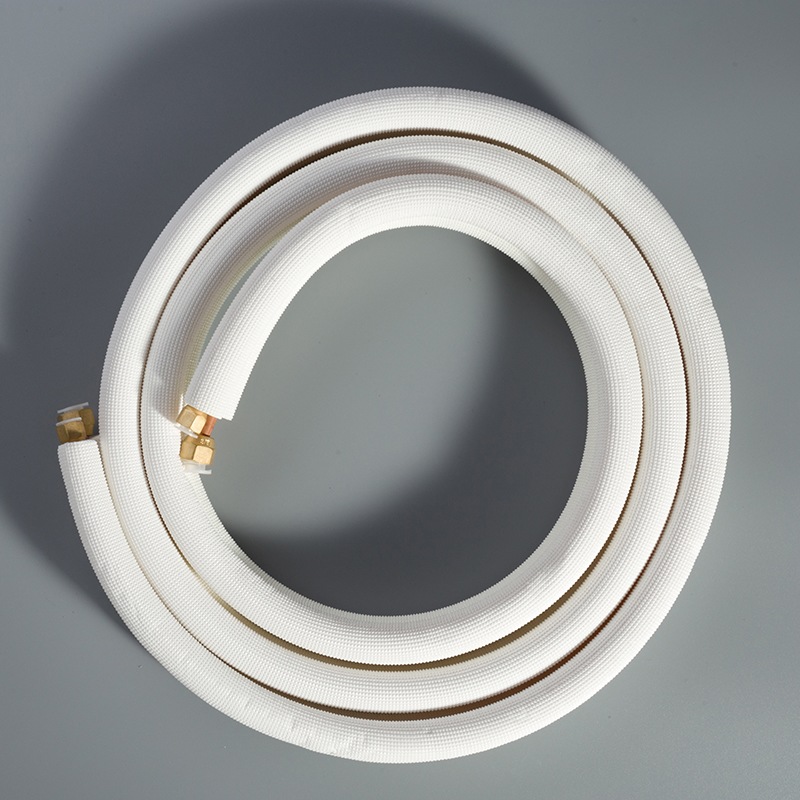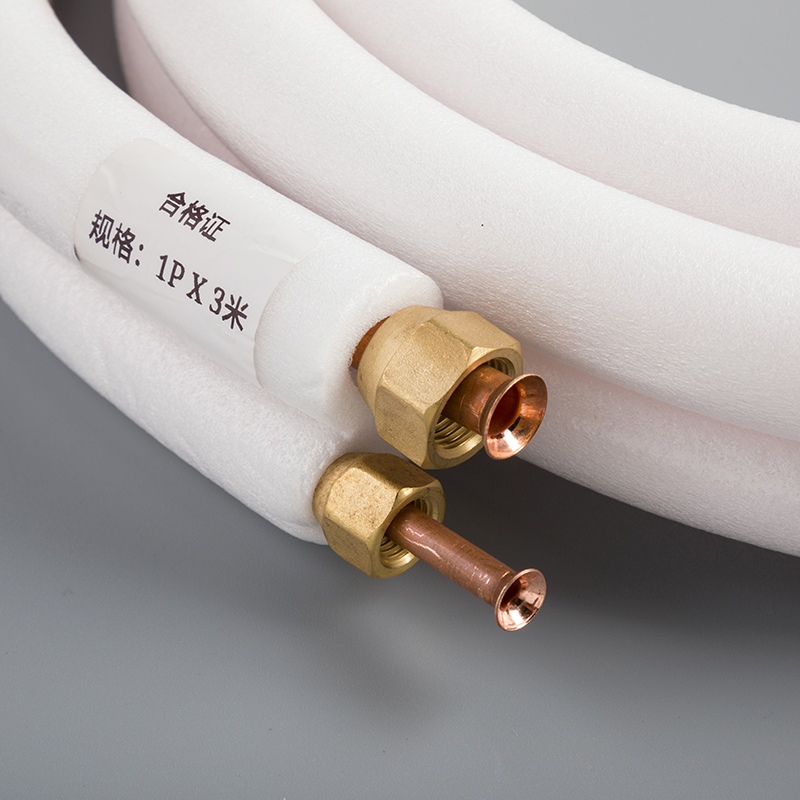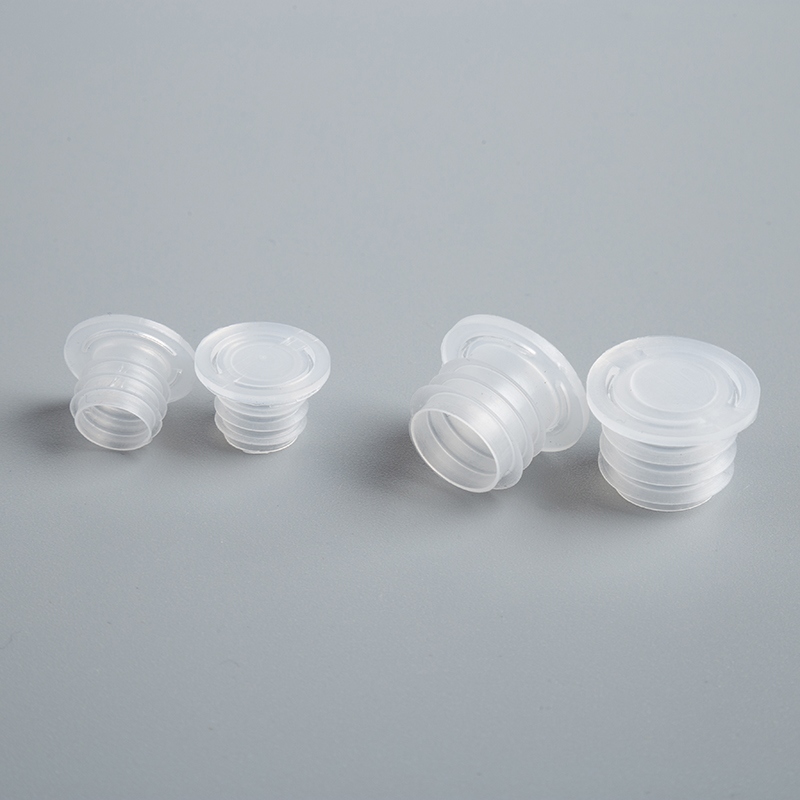How to Connect Copper Tubing to Air Conditioning Units

Connecting air conditioning copper tubing to units is crucial for ensuring both efficiency and safety. When you make a proper connection, you enhance the performance of your system and prevent potential hazards. Copper refrigerant lines play a vital role in air conditioning systems. They efficiently move refrigerant, which improves the overall performance of HVAC units. These copper refrigerant lines are not only durable but also eco-friendly, offering significant weight savings when you downsize tube diameters. This makes them an ideal choice for modern air conditioning systems.
Understanding Air Conditioning Copper Tubing
When it comes to air conditioning systems, copper tubing plays a pivotal role. You might wonder why copper is the go-to material. Well, it's all about its efficiency and reliability. Let's dive into the types of copper tubing and the benefits they bring to your HVAC system.
Types of Copper Tubing
Copper tubing comes in two main types, each with its unique applications and advantages.
Soft Copper Tubing
Soft copper tubing is flexible and easy to work with, making it ideal for installations that require bending and shaping. You often find it in rolls, which allows for seamless installation without the need for multiple joints. This reduces the risk of leaks. Soft Type L copper tubing, for instance, is perfect for underground and outdoor applications. Its flexibility means you can maneuver it around obstacles without compromising its integrity.
Hard Copper Tubing
On the other hand, hard copper tubing is rigid and typically used in situations where straight runs are necessary. It provides excellent durability and is often used in exposed areas where the tubing needs to maintain its shape. While it requires fittings for connections, its robustness makes it a reliable choice for many HVAC applications.
Benefits of Using Copper Refrigerant Lines
Copper refrigerant lines offer several advantages that make them indispensable in air conditioning systems.
Durability
Copper is renowned for its durability. It withstands the test of time and harsh environmental conditions. This makes it a preferred choice for HVAC systems. You won't have to worry about frequent replacements or repairs, as copper can handle the demands of refrigerant flow without degrading.
Thermal Conductivity
Another standout feature of copper is its thermal conductivity. Copper efficiently transfers heat, which is crucial for the effective operation of air conditioning units. This property ensures that your system runs smoothly, maintaining optimal temperatures and reducing energy consumption. By using copper refrigerant lines, you enhance the overall performance and efficiency of your air conditioning system.
Tools and Materials Needed

To connect copper tubing to air conditioning units, you need the right tools and materials. Having these on hand ensures a smooth installation process and helps you avoid common pitfalls.
Essential Tools
Pipe Cutter
A pipe cutter is a must-have tool for cutting copper tubing. It provides clean, precise cuts, which are crucial for a proper fit. You simply place the cutter around the tube, tighten it, and rotate until the tube is cut. This tool makes the job easier and ensures that your cuts are straight and smooth.
Flaring Tool
The flaring tool is essential for creating flares at the ends of copper tubing. These flares allow you to connect the tubing securely to fittings. You insert the tube into the tool, tighten it, and then use the cone to form a flare. This process ensures a tight seal, preventing leaks in your system.
Required Materials
Copper Tubing
Copper tubing is the backbone of your air conditioning system. Its durability and ease of installation make it the preferred choice for HVAC systems. When selecting copper tubing, consider the pressure rating and wall diameter to ensure efficient operation. Type L copper tubing is often used for its flexibility and suitability for various applications.
You'll also need fittings and connectors to join sections of copper tubing. These components are vital for creating a leak-free system. Choose fittings that match the size and type of your tubing. Compression fittings are popular because they provide a secure connection without the need for soldering.
You'll also need fittings and connectors to join sections of copper tubing. These components are vital for creating a leak-free system. Choose fittings that match the size and type of your tubing. Compression fittings are popular because they provide a secure connection without the need for soldering.
By gathering these tools and materials, you're setting yourself up for a successful installation. With the right equipment, you can confidently tackle the task of connecting copper tubing to your air conditioning unit.
Preparing for Connection
Before you start connecting copper tubing to your air conditioning unit, preparation is key. This involves measuring, cutting, cleaning, and deburring the tubing. These steps ensure a smooth installation and help prevent leaks.
Measuring and Cutting Tubing
Accurate measurements and precise cuts are crucial when working with copper tubing. Here's how you can achieve both: Accurate measurements and precise cuts
Accurate Measurement Techniques
Use a Tape Measure: Always use a reliable tape measure to get the exact length of tubing needed. Measure twice to avoid mistakes.
Mark Clearly: Use a permanent marker to mark the cutting point on the tubing. This ensures you cut at the right spot.
Consider Bends and Fittings: Account for any bends or fittings in your measurements. This prevents shortages and ensures a proper fit.
Safe Cutting Practices
Choose the Right Tool: A pipe cutter is your best friend for cutting copper tubing. It provides clean and straight cuts.
Secure the Tubing: Hold the tubing firmly to prevent it from moving while cutting. This reduces the risk of uneven cuts.
Rotate Smoothly: Rotate the pipe cutter around the tubing smoothly. Tighten the cutter gradually until the tubing is cut through.
Cleaning and Deburring
Once you've cut the tubing, cleaning and deburring are essential steps. They ensure a secure and leak-free connection.
Importance of Clean Surfaces
Clean surfaces are vital for a strong bond between the tubing and fittings. Dirt or debris can compromise the seal, leading to leaks. Always wipe down the tubing with a clean cloth before proceeding.
Deburring Tools and Techniques
Use a Deburring Tool: A deburring tool removes sharp edges and burrs from the cut tubing. This is crucial for a snug fit.
Smooth the Edges: Insert the deburring tool into the tubing and rotate it to smooth out the edges. This prevents damage to the fittings.
Inspect Your Work: After deburring, inspect the tubing to ensure all burrs are removed. This step guarantees a clean and safe connection.
By following these preparation steps, you set the stage for a successful installation. Proper measuring, cutting, cleaning, and deburring not only make the process easier but also enhance the efficiency and longevity of your air conditioning system.
Connecting Copper Tubing

Now that you've prepared your copper tubing, it's time to connect it to your air conditioning unit. This process involves flaring the tubing and securing the connection. Let's walk through these steps to ensure a successful installation.
Flaring the Tubing
Flaring the tubing is a crucial step in creating a secure connection. It involves expanding the end of the copper tubing to fit snugly into a fitting.
Steps to Flare Copper Tubing
Cut the Tubing: Ensure the end of the copper tubing is clean and cut straight. Use a pipe cutter for precision.
Deburr the Edge: Remove any burrs from the cut edge using a deburring tool. This step is essential for a smooth flare.
Insert the Tubing into the Flaring Tool: Place the tubing into the flaring tool's clamp. Make sure it extends slightly above the clamp's surface.
Tighten the Clamp: Secure the tubing by tightening the clamp. This holds the tubing in place during the flaring process.
Create the Flare: Use the flaring cone to expand the tubing's end. Rotate the cone steadily until you achieve a uniform flare.
Expert Testimony: AC Service Tech emphasizes the importance of using both swaging and deburring tools to ensure a proper flare and prevent leaks.
Common Mistakes to Avoid
Over-tightening the Clamp: This can deform the tubing and lead to an uneven flare.
Skipping the Deburring Step: Burrs can cause leaks and weaken the connection.
Inconsistent Pressure: Apply steady pressure when using the flaring cone to avoid an irregular flare.
Securing the Connection
Once you've flared the tubing, the next step is to secure the connection using compression fittings. This ensures a leak-free system.
Using Compression Fittings
Slide the Nut onto the Tubing: Before connecting, slide the compression nut onto the tubing.
Insert the Tubing into the Fitting: Push the flared end of the tubing into the fitting. Ensure it fits snugly.
Tighten the Nut: Use a wrench to tighten the compression nut. This secures the tubing to the fitting.
Ensuring a Leak-Free Seal
Check for Alignment: Ensure the tubing and fitting are aligned correctly before tightening.
Avoid Over-tightening: Excessive force can damage the tubing and compromise the seal.
Test for Leaks: After securing the connection, test for leaks by applying a soapy water solution around the fitting. Look for bubbles indicating a leak.
By following these steps, you can confidently connect air conditioning copper tubing to your unit. Proper flaring and securing techniques ensure that your copper refrigerant lines function efficiently and safely.
Testing and Final Considerations
Once you've connected the copper tubing to your air conditioning unit, it's time to ensure everything is working perfectly. Testing the connection and considering final adjustments are crucial steps to guarantee a leak-free and efficient system.
Pressure Testing the Connection
Pressure testing is an essential step to confirm that your connections are secure and free from leaks. This process helps you identify any weak points in the system before it becomes operational.
Methods for Pressure Testing
Hydrostatic Testing: Fill the system with water and pressurize it to check for leaks. This method is safe and effective for detecting even the smallest leaks.
Pneumatic Testing: Use air or nitrogen to pressurize the system. This method requires caution due to the potential hazards of compressed gases. Always follow safety guidelines.
Safety Tip: The A10.35 standard provides safe work practices for pressure testing. Familiarize yourself with these procedures to avoid injuries during testing.
Interpreting Test Results
No Pressure Drop: If the pressure remains stable, your connections are secure.
Pressure Drop Detected: A drop indicates a leak. Inspect all joints and fittings to locate and fix the issue.
Maintenance Tips
Regular maintenance keeps your air conditioning system running smoothly and extends the lifespan of your copper tubing. Here are some tips to help you maintain your system effectively.
Regular Inspection
Visual Checks: Regularly inspect the tubing for signs of wear, corrosion, or damage. Early detection can prevent costly repairs.
Listen for Unusual Sounds: Strange noises may indicate a problem with the system. Investigate any unusual sounds promptly.
Addressing Common Issues
Water Chemistry Imbalances: Imbalances can lead to corrosion. Monitor and adjust water chemistry to protect your copper pipes.
External Stressors: Protect pipes from physical damage by securing them properly and avoiding exposure to harsh environments.
Pro Tip: Seeking professional assistance for complex issues ensures that your system receives expert care. Professionals can provide strategies for protecting pipes from external stressors and maintaining optimal performance.
By following these testing and maintenance steps, you ensure that your air conditioning system operates efficiently and safely. Regular checks and proper care will keep your copper tubing in top condition, providing you with reliable cooling for years to come.
You've now mastered the process of connecting copper tubing to air conditioning units. This skill ensures your system runs efficiently and safely. Regular maintenance is key to extending the life of your copper pipes. Keep an eye out for any signs of wear or damage. If you're ever unsure or face complex issues, don't hesitate to seek professional help. As one user shared, "Thanks for the advice but for now I'm looking for specific (good or bad) testimonials from people who had their copper pipes epoxy-relined." Remember, expert guidance can make all the difference in maintaining a reliable system.
See Also
Revealing the Progression of Copper Tubes in Air Cooling
Exploring the Influence: Copper Tubes in AC Systems
Simple Guide: Installing Copper Tubes for AC Like an Expert


